The Anthropology of Eastern Religions
The Anthropology of
Eastern Religions
Ideas, Organizations, and Constituencies
Murray J. Leaf
LEXINGTON BOOKS
Lanham Boulder New York London
Published by Lexington Books An imprint of Rowman & Littlefield 4501 Forbes Boulevard, Suite 200, Lanham, Maryland 20706 www.rowman.com 10 Thornbury Road, Plymouth PL6 7PP, United Kingdom Copyright 2014 by Lexington Books All rights reserved. No part of this book may be reproduced in any form or by any electronic or mechanical means, including information storage and retrieval systems, without written permission from the publisher, except by a reviewer who may quote passages in a review. British Library Cataloguing in Publication Information Available Library of Congress Cataloging-in-Publication Data Leaf, Murray J., author. The anthropology of eastern religions : ideas, organizations, and constituencies / Murray J. Leaf. pages cm Includes bibliographical references and index. ISBN 978-0-7391-9240-5 (cloth) -- ISBN 978-0-7391-9241-2 (electronic) 1. Anthropology of religion--Asia. 2. Religion and sociology--Asia. 3. Asia--Religion. I. Title. GN470.7.L43 2014 306.6095--dc23 2014007857

TM The paper used in this publication meets the minimum requirements of American National Standard for Information Sciences Permanence of Paper for Printed Library Materials, ANSI/NISO Z39.48-1992. Printed in the United States of America
List of Illustrations
Preface
This is one of two volumes. Together they make up a comparative ethnography of the worlds great religions, focusing on the relationships between their main ideas, their organizations, and their roles in history and world affairs. It is not an argument in favor of or against any one religion, or religion in general. As an anthropologist, my interest in this particular type of human activity is no different from what it would be for any other. The basic questions are always, What are they doing, how are they doing it, and why?
The description has six features that are different from what we usually see in basic surveys of the world religions. The first is that it is thoroughly empirical. I do not claim to describe or know about things beyond human experience. It is therefore also humanistic.
Second, I do not start with a definition of religion. One reason is that we do not need one. The major traditions have identified each other. The other reason is that such a definition would be distorting. We can see that each of the recognized religions has its own idea of what religion is in general, and these ideas are not the same. Yet they all function in the same way. They act like built-in mission statements. They are the way the tradition defines what it should be doing in general, and against this the tradition then further describes itself as a way, or the way, to do it. It follows that imposing a general idea of religion on a tradition that is alien to its own general idea of religion is the same as imposing an alien purpose or standard of performance on it. It automatically devalues their own purposes and distorts their ways of accomplishing them.
The third feature is that we recognize that these worldwide religious traditions have important similarities to a number of other worldwide traditions that we similarly associate with higher society or civilization, including government, law, military organizations, business, scholarly and scientific professions, and formal education.
The fourth feature is that I emphasize the interpretation of foundational texts and textual materials, rather than beliefs. There are several reasons, but the main one is that this is also the focus of the religious professionals.
The fifth is its focus on organizations, which are built from the ideas drawn from the texts and stabilized by the texts.
The sixth feature is its focus on purposes and strategies. This includes the purposes of the concerned officers and organizations and the main purposes that bring adherents or supporters to these officers and organizations.
Taken together, these features let us see religion in its cultural entirety from production to application and back to production. This in turn lets us understand it on an even footing with other traditions and organizations of similar prominence.
Murray J. Leaf
University of Texas, Dallas
Acknowledgments
The major world religions, east and west, all depend on the interpretations of texts by dedicated and trained professionals. The meaning of a text is partly a matter of what is on the page that anyone might see, but also a matter of what its interpreters assume and intend. Getting a sense of this personal and social side of a tradition involves ethnography. It involves talking to people. I have done so with every tradition I describe here, although of course not every subdivision. This has involved far too many personal encounters to acknowledge comprehensively, but it is a pleasure to recognize the most prominent.
For my introduction to Sikhism and Vedanta, I am especially indebted to the late Sardar Balwant Singh and the late Justice Harbans Singh. For Japanese religions, and especially Japanese Buddhism, I am particularly indebted to Toshihiro Yogo, with whom I was associated at the United Nations Center for Regional Development, in Nagoya, Japan, for several years, and also to Aminta Lara Peters and Olivia Peters. Michelina Leaf and Alisha Kim provided editorial suggestions. Phan Thi Cam Anh provided bibliographic assistance. The image of the proto-Shiva, Figure 2.1, is from Wikimedia Commons and in the public domain.
Very importantly, I must thank my students over the past thirty years who urged me to write this and whose many discussions, reactions, and class papers inform it.
Chapter 1
Introduction
Human society is pluralistic. We have institutions of several different kinds. These are not mutually compatible: religions, governments, formal education, economies, militaries, sciences, the learned professions, families and kinship organizations. Moreover, in every place inhabited by a few thousand people or more, some of these institutions are unique to that place or nearly so and some may be worldwide. My concern here is with what are often called the great religions. They are also described as organized religions. All of them are now either worldwide or nearly so. This means they occur in many different communities around the world, and in those communities they are juxtaposed to many other institutions of other kinds. The two major questions I address are What are they? and What effects do they have?
Since each of these traditions confronts some or all of the others in some places, misrepresentations and misunderstandings aboundas do actual conflicts. To understand them on an even footing, objectively, we need to get beyond first appearances and stereotypes. We also need to put their ideas, actions, and effects in context. These two needs are closely interrelated. To get beyond stereotypes we have to see things in context, and in order to see things in context we have to see them as they are seen by those involved, not through our own preconceptions. This does not preclude making our own independent evaluation afterward, but we first need to know what we are evaluating. This is not easy. We have centuries of mutual misrepresentation to overcomemuch more than with most other worldwide systems.
At a basic descriptive level, this means that I need to answer questions like How can they believe that ? At a more conceptual level it means I need to explain how people actually interpret the ideas and ceremonies of their traditions. What is a god in Hindu mythology? How do people deal with so many of them? How many are there? Does it matter? What are the Vedas about? What is a guru? Why dont some Buddhist stupas even have interiors? What is the meaning of that big thing that looks like a gate in Japan? What is God in Christian or Jewish theory? (Is there just one notion for each, or are there several, and why?) What is jihad ? What is an Ayatollah? Why do Muslim extremists attack Sufis? What is the authority of a rabbi, a Catholic priest, or a Buddhist monk? What is Islamic law about? Does Hindu law represent divine commands? What is the relation between Hinduism and caste? How can Buddhism be a religion if it is atheistic? Is Confucianism really a religion? What is the Tao? Why do some religions require exclusive loyalty while others do not? And so on.
Next page
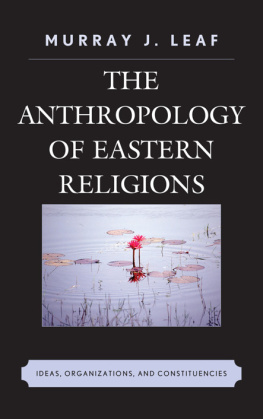

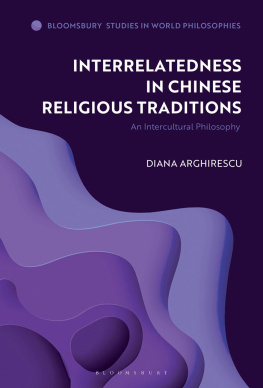
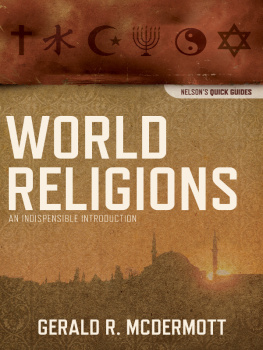
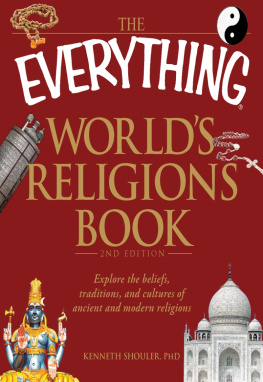
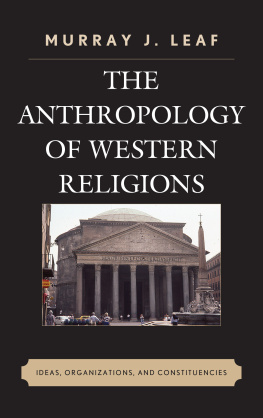

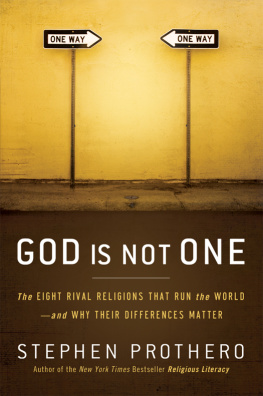
 TM The paper used in this publication meets the minimum requirements of American National Standard for Information Sciences Permanence of Paper for Printed Library Materials, ANSI/NISO Z39.48-1992. Printed in the United States of America
TM The paper used in this publication meets the minimum requirements of American National Standard for Information Sciences Permanence of Paper for Printed Library Materials, ANSI/NISO Z39.48-1992. Printed in the United States of America